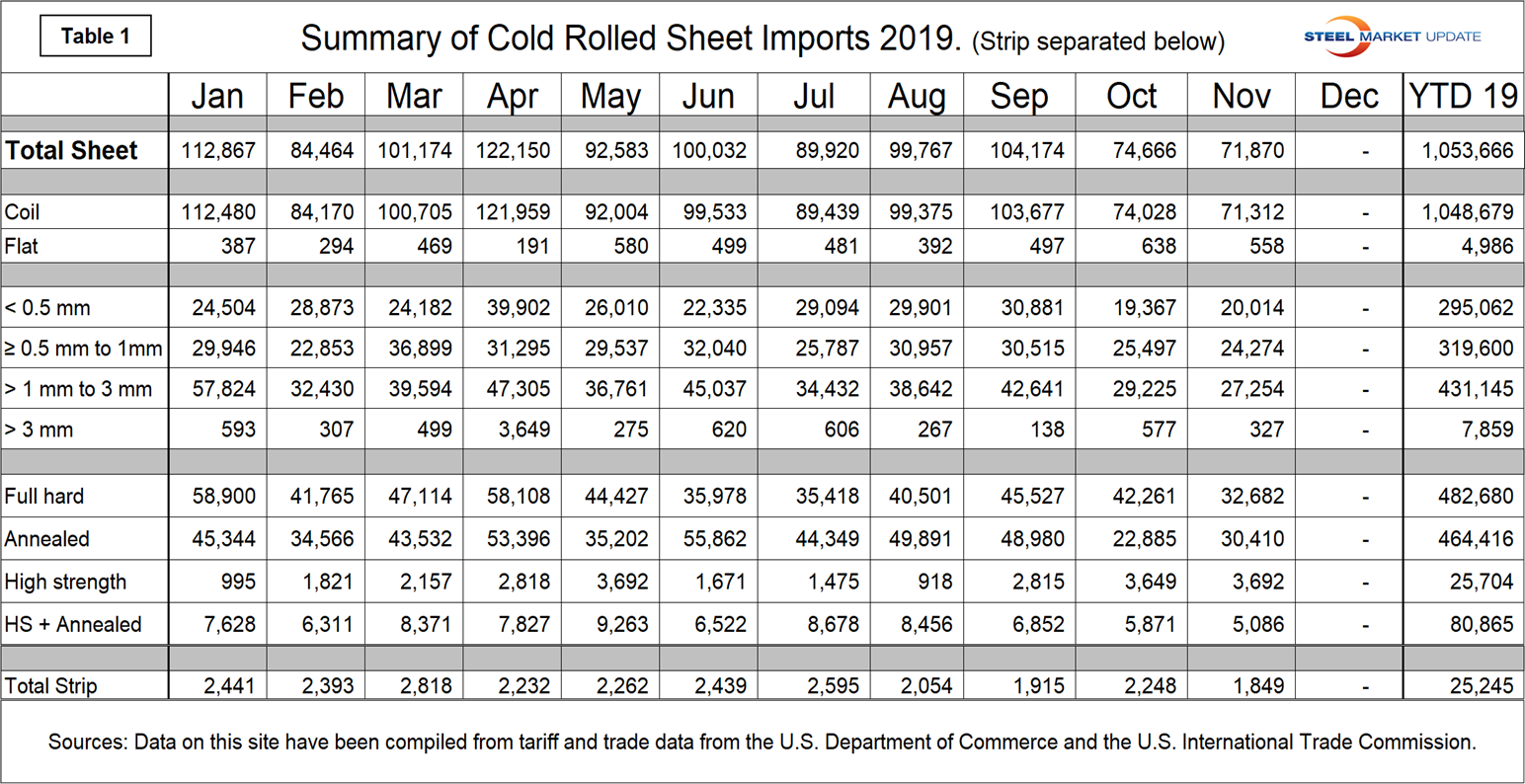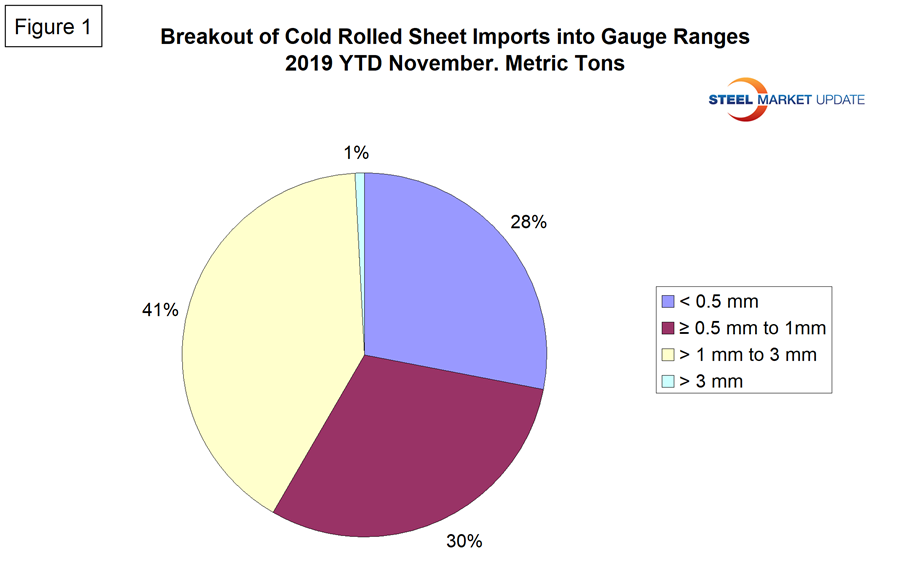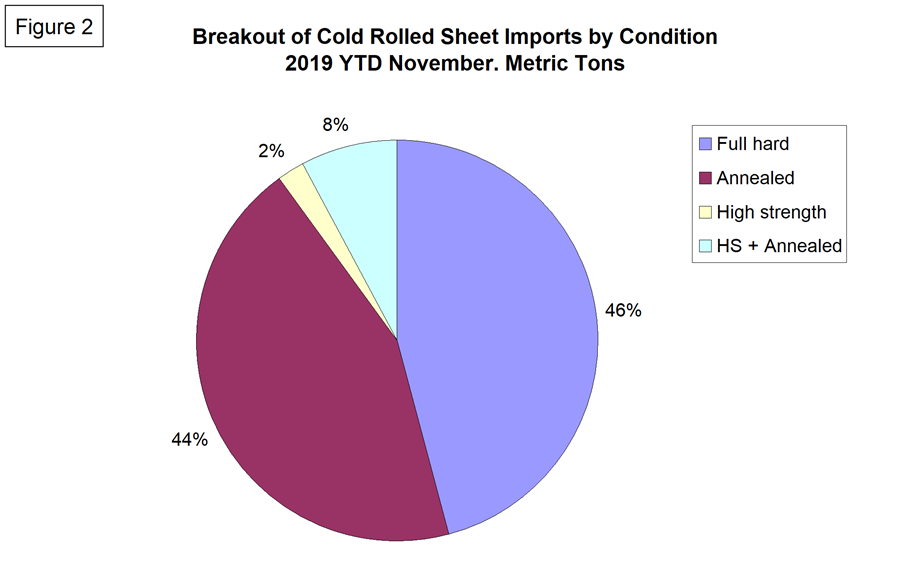SMU Data and Models

Drill Down of Cold Rolled Imports into Product Detail
Written by Peter Wright
January 13, 2020
Using U.S. International Trade Commission (USITC) data, Steel Market Update has taken the import tonnage of cold rolled sheet and broken it down into coil and leveled, then our report breaks out four thickness ranges and identifies how much was full hard, annealed and high strength.
Through November 2019, of the total cold rolled sheet and strip imports into the U.S., only 2.4 percent was strip. By gauge range the sheet broke down to: 28.0 percent < 0.5mm, 30.3 percent ≥ 0.5 to 1.0 mm, 40.9 percent> 1 to 3mm thick and 0.7 percent > 3 mm.
Table 1 is a summary for 2019 through November of cold rolled imports showing gauge ranges and condition and the annual year-to-date total for sheet. Strip is itemized separately at the bottom of the table. Both are in metric tons.

Figure 1 breaks the year-to-date cold rolled sheet tonnage down into the four gauge ranges that are identified in the HTS codes.

Figure 2 does the same thing for condition. It identifies the volume of full hard, annealed, high strength and high strength annealed. Year to date November, 45.8 percent was full hard, 44.1 percent was annealed, 2.4 percent was high strength and 7.7 percent was high strength annealed.

Note: This data was accessed through the USITC database. All steel traded globally is classified by the Harmonized Tariff System (HTS). The HTS code has 10 digits. The first six are globally universal. The last four are used at the discretion of the nations involved in a particular transaction and are the basis of this report. The way the U.S. uses the last four digits to define products may be different from other nations’ product classification.

Peter Wright
Read more from Peter WrightLatest in SMU Data and Models

SMU Survey: Sheet lead times ease further, plate hits one-year high
Steel buyers responding to this week’s SMU market survey report a continued softening in sheet lead times. Meanwhile, plate lead times have moderately extended and are at a one-year high.

SMU Survey: Buyers report more price flexibility from mills
Nearly half of the steel buyers responding to this week’s SMU market survey say domestic mills are showing increased willingness to negotiate pricing on new spot orders. This marks a significant shift from the firmer stance mills held in prior weeks.

SMU Survey: Buyers’ Sentiment Indices fall
Current Sentiment Index dropped six points to +42 this week compared to two weeks earlier. It has fallen in every successive survey since reaching a 2025 high of +66 on Feb. 19.

March service center shipments and inventories report
Steel service center shipments and inventories report through March 2024.

Apparent steel supply contracts in February
The amount of finished steel that entered the US market in February receded from January’s peak, according to our analysis of Department of Commerce and American Iron and Steel Institute (AISI) data.
